What to do if a moth appears on currants, how to fight
Gardeners who grow black currants have repeatedly encountered the problem of infestation of bushes with moth. The first thing you need to pay attention to is the cocoons of cobwebs on the fruit clusters and the change in color of the berries from black to brown-brown.
In summer, many large gray-brown butterflies appear on the bushes and actively lay eggs. In this article we will tell you how to deal with currant moth, what control measures are most effective and how to prevent infection of the plant.
What does a fireweed look like?
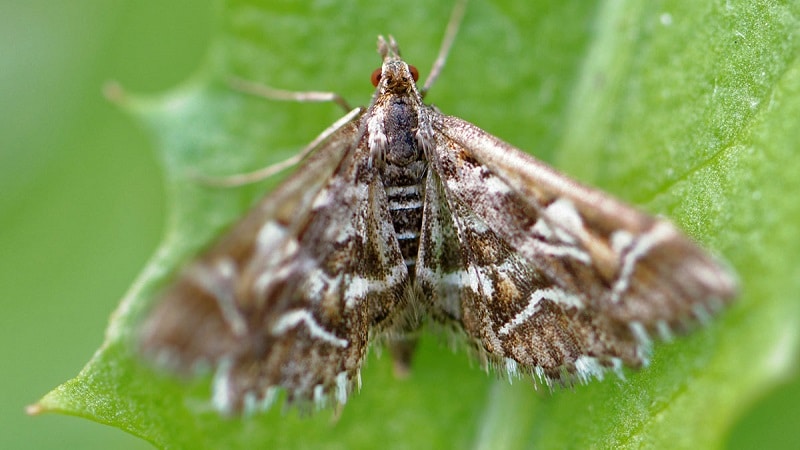
The moth is a large butterfly about 3 cm long. You can recognize it by the color of its wings: the upper ones are gray with contrasting light stripes and brown spots, the lower ones are gray-brown with fringe along the edges. The caterpillars are small, green with black heads, feed on the sweet juice of berries and entangle the brushes with cobwebs.
Reference. Each female moth lays about 200 eggs.
To successfully combat the pest, the gardener must know the features of the development and reproduction of insects:
- At the end of November, the caterpillars pupate and go to winter in fallen leaves or the top layer of soil under a currant bush. Before flowering, the pupae turn into butterflies, which within a week lay their first eggs in the flowers.
- The eggs are white, ¾ parts 1 mm in size, mature in about 7 days and at the caterpillar stage begin to actively eat leaves and berries.
- Butterfly flights and egg laying last a month.Only one caterpillar develops in each ovary or berry; the rest crawl throughout the bush or move to neighboring plants.
Interesting things on the site:
Gall midge on currants: effective methods of control and prevention
Why currant scab is dangerous and how to effectively combat it
Why is moth dangerous for currants?
Moth caterpillars are known for their gluttony. They eat the pulp and seeds of berries, quickly moving from one to another, while simultaneously entangling the brushes with a thin web. Cocoons with spoiled fruits inside appear on the bushes. Subsequently, the berries rot and gradually dry out. In the center of the cocoons are the caterpillars themselves.
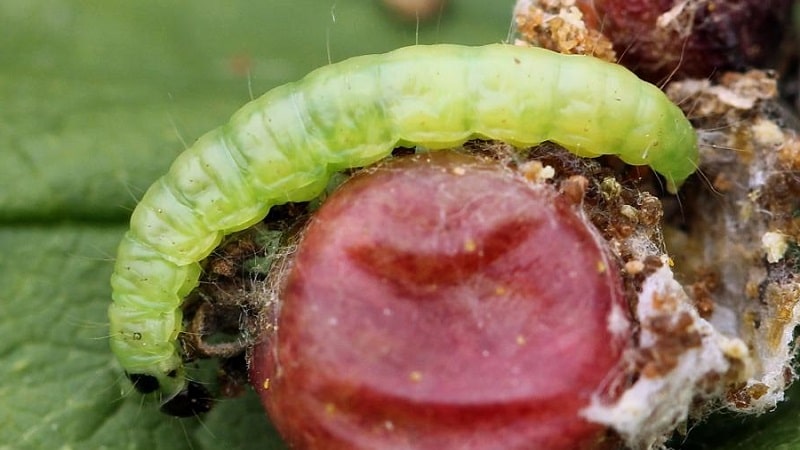
As soon as you notice that cocoons from cobwebs and holes in the berries have appeared on the currants, immediately begin processing the plant. The caterpillars themselves are too small to be seen with the naked eye. It is better to inspect the bush with a magnifying glass. Another sign of moth damage is a change in the color of the berries. They turn brownish brown.
Reference. A colony of caterpillars is capable of destroying 85% of the entire crop, taking into account the fact that one individual sucks the juice from 10-15 berries.
How to deal with a pest
To combat the blackcurrant moth, chemical, biological and folk remedies, as well as agricultural techniques, are used.
Chemicals
Treatment with insecticides is much more effective than folk remedies based on plants. However, when using chemicals, it is necessary to take into account that moth caterpillars eat the berries. Therefore, the use of drugs is possible only to prevent infection in early spring and late autumn in order to exterminate pupated pests.
Spraying in early spring
As soon as the temperature reaches above zero, bushes are watered with boiling water. After a week, the plants are sprayed with a solution of Topaz or another available insecticide. The main task is to destroy overwintered insects.
In addition to processing the bush, special attention is paid to the area around the tree trunk. The soil is watered with a solution of any systemic insecticide and the row-spacings are covered with a dense film that prevents butterflies from penetrating outside.
Before flowering, currants are treated with 1% Iskra M or 0.5% Kinmiksa solution.
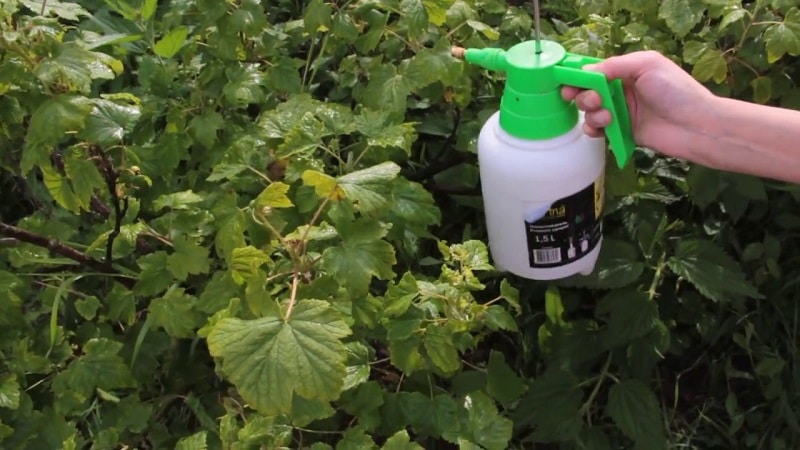
Treatment after flowering
During the development of caterpillars, insecticides are used:
- 0.2% Actellica solution;
- 0.5% - “Kinmiksa”;
- 0.1% - Iskra-M;
- 0.2% - “Fufanon”;
- 3% - "Karbofos".
The drugs "Rovikurt", "Kilzar" and "Tiovit Jet" have also proven their effectiveness in the fight against moth. The minimum waiting period after treatment with all these drugs is 20 days. Only after this period can you eat the berries, but first they need to be washed several times with water.
The use of biological agents during the formation of berries
During this period, moth caterpillars develop rapidly, and adults actively lay eggs. Experienced gardeners recommend combining folk remedies with biological preparations with a short waiting period. Green fruits are treated with 0.3% Fitoverma solution (waiting period is 48 hours), 1% Bitoxibacillin. To destroy young caterpillars, use a 0.3% solution of Lepidocide (waiting period - 5 days). "Agrovertin" and "Iskra Bio" are used for irrigation of all types and varieties of currants.
Natural enemies help in the fight against moth: viruses, fungi, bacteria, and other insects.This method is not dangerous for the environment and humans and in some cases turns out to be more effective than chemicals.
Pink muscardine is a parasitic fungus that develops in conditions of high humidity and has a detrimental effect on the moth.
Insects such as ichneumon flies and tahini flies quickly reduce moth numbers.
In summer and during the period of egg laying, it is recommended to populate currants with trichogramma - microscopic insects that cling to newly emerging caterpillars and parasitize on them.
Another natural enemy is ground beetles. These beetles belong to the order Coleoptera.
Traditional methods
Traditional methods help scare off the moth at the early stage of infection of bushes. Infusions of various herbs are used to process currants during flowering and harvesting. In addition, gardeners dust the bushes and tree trunks.
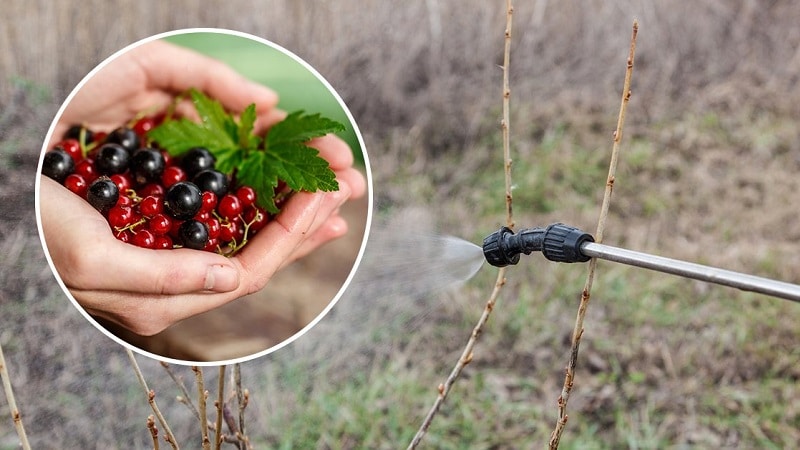
Traditional recipes:
- Pour 50 g of dry chamomile into 5 liters of boiling water. Cover the container with a lid and wrap it up. After cooling, strain the infusion and irrigate the bushes during the currant flowering period and the summer of butterflies.
- Pyrethrum - dry powder from Dalmatian chamomile - spray over bushes and soil. The easiest way to do this is through a sieve. Some summer residents advise mixing the powder with road dust. Carry out dusting every 7 days until the pests disappear completely.
- Powder the bushes with wood ash or prepare an infusion. Pour 1/3 of the ash into a 10-volume bucket, fill it to the top with water and stir with a wooden stick. After 3 days, strain the infusion through cheesecloth and add 30 g of household shavings or 25 ml of liquid tar soap.
- Spray mustard powder over the bush or prepare a working solution for spraying.Mix 50 g of powder with 5 liters of water at room temperature and leave for 2 days. The solution is suitable for treating bushes with ripe berries.
- Pour 200 g of tobacco dust and 200 g of wormwood into 5 liters of warm water and leave the solution for 48 hours. Bring the volume to 10 liters, mix in 30 g of laundry soap shavings and treat the bushes.
- Throughout the flowering phase, spray the bushes with pine extract every 7 days. To prepare a solution against butterflies, dissolve 30 ml of pine needle extract in 10 liters of water. A more concentrated solution will help destroy caterpillars: 60 ml of extract per 10 liters of water.
- Plant an elderberry next to the currants or stick several flowering branches into the crown of the bush. You can treat the plant with a mixture of 10 g of flowers and 1 liter of boiling water, infused for 24 hours.
- Late in the evening, treat with a solution of soda - 1 tbsp. l. for 1 liter of water. The butterfly is nocturnal, and contact agents will help scare it away.
How to prevent the appearance of moth using agricultural practices
To protect the currant plantation from the spread of the moth, it is recommended to carry out a whole range of agrotechnical measures:
- In late autumn, the soil between the rows is plowed to the depth of a spade, and the area around the tree trunk is loosened shallowly with a pitchfork. The pupae of the moth lie at a depth of 30-40 mm, therefore, by lifting the layers of soil, it will be possible to reduce the number of adults. In addition, the pest is afraid of frost and dry soil.
- The tree trunk circle is mulched with sawdust or covered with agrofibre. This makes it difficult for butterflies to rise in the spring and reduces their numbers.
- In early spring, the soil and bushes are spilled with boiling water.
- All affected shoots, leaves and berries are removed and burned away from the currant plantation.
- Strong and healthy plants are less susceptible to infection by moth, so the gardener's first priority is in compliance with the watering regime And fertilizing. It is also important to promptly remove weeds and perform thinning pruning of the crown.
Advice from experienced gardeners
Experienced gardeners first of all advise carefully caring for the currant plantation, feeding the bushes on time, weeding the tree trunk and soil between the rows, monitoring the level of humidity and feeding the bushes with mineral fertilizers.
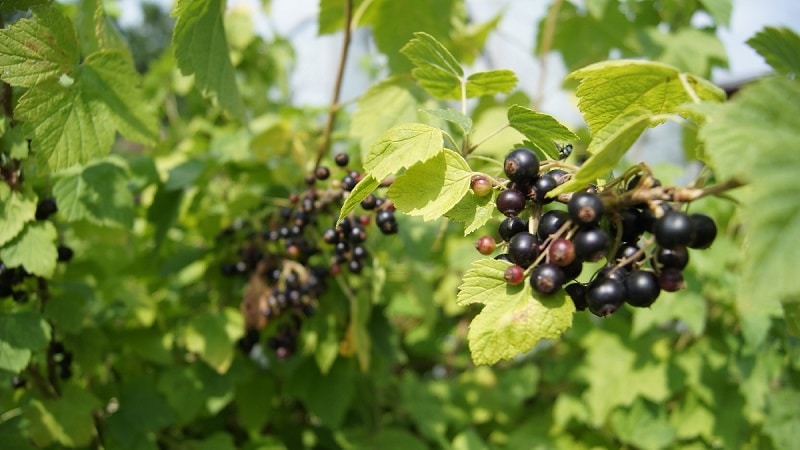
To reduce currant processing to a minimum, it is recommended to give preference to varieties such as Viksne and Jonker van Tets. They have strong immunity to most diseases characteristic of black currants, and are also rarely subject to attacks by moths and other insects.
Gardeners also advise planting elderberries, marigolds, chamomile, calendula, and tobacco in the rows. The strong smell of these plants repels pests.
You can hang feeders in the garden to attract tits and other birds. Birds will help get rid of hordes of caterpillars and reduce their population by 60-70%.
Conclusion
Blackcurrant moth is a common occurrence. The first signs of damage to the bushes are large gray-brown butterflies on the foliage and cocoons of cobwebs on the fruit clusters in which the caterpillar is hiding. Without timely intervention, the gardener risks losing the blackcurrant harvest. To combat the pest, highly effective contact insecticides are used (Aktellik, Kinmiks, Iskra-M, etc.). Biological agents have also proven their effectiveness: “Fitoverm”, “Bitoxibacillin”, “Lepidocid”. Traditional methods help repel the moth at an early stage of infection.Gardeners use infusions based on chamomile, elderberry, ash, tobacco, pyrethrum and soda.